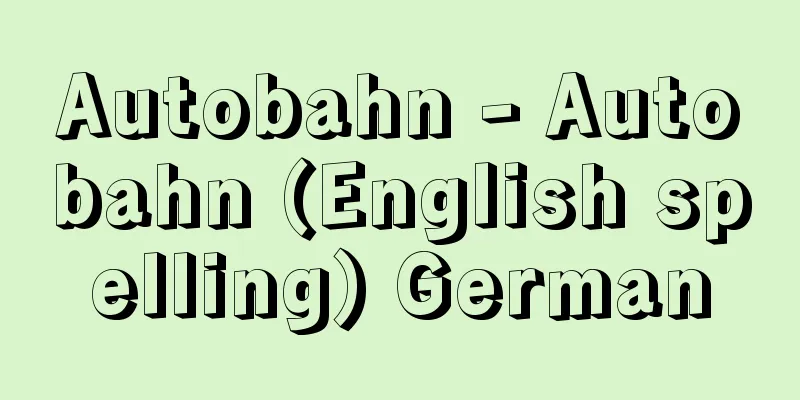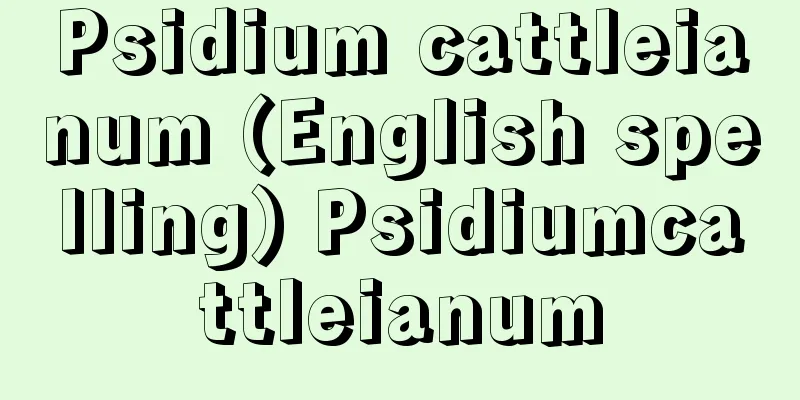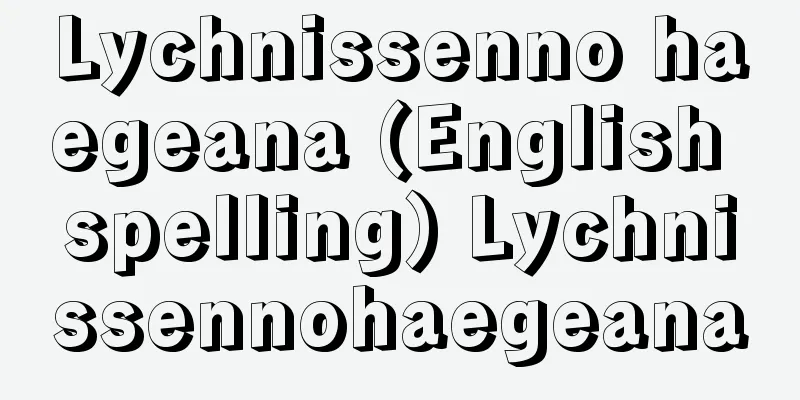Autobahn - Autobahn (English spelling) German

|
It is a common German noun meaning a highway for automobiles only, but in the narrow sense it refers to a highway in Germany. The construction and maintenance of autobahns are the responsibility of the German federal government, but the actual work is entrusted to state governments. Modern expressways for automobiles only have existed in Germany since the 1920s (the Cologne-Bonn expressway, completed in 1932, is famous), but construction began in 1933 under the Nazi regime under the name of the Reichsautobahn, Reichs-Autobahn (German Empire Motorway), which became the forerunner of modern expressways. The initial goal was to build about 14,000 kilometers, and the first Reichsautobahn opened between Frankfurt and Darmstadt in 1935. By the time it was discontinued in 1942 during World War II, about 3,860 kilometers had been completed (about 2,100 kilometers of which remained in West Germany). After the war, both East and West Germany proceeded with the construction of autobahns as their domestic trunk roads, and by 1973 the total length had reached 5,258 km in West Germany and 1,390 km in East Germany, and by 1985 it had reached 8,198 km in West Germany. Even after the reunification of East and West Germany in 1990, the construction and improvement of autobahns continued, with a total length of 10,995 km in 1992, 11,246 km in 1997, and 11,515 km in 2000. As of 2012, the total length was 12,845 km. Furthermore, the highways border neighboring countries, allowing the movement of people and goods across borders. The Autobahn was once famous for being a road with no speed limit, but now speed limits are imposed on large trucks (80 km/h) and buses (often 100 km/h), and there are also restricted sections at junctions, construction sites, and around large cities. The Autobahn faces many challenges, including balancing economic viability with protecting the natural environment and scenery, maintaining and managing aging facilities, widening roads from four lanes to six lanes, and then from six to eight lanes, to accommodate increasing traffic volumes, updating the roadbed, and securing the necessary financial resources. [Eiichi Aoki and Ryo Aoki] [Reference item] | |Source: Shogakukan Encyclopedia Nipponica About Encyclopedia Nipponica Information | Legend |
|
自動車専用の高速道路を意味するドイツ語の普通名詞であるが、狭義にはドイツの高速自動車道をさす。アウトバーンの建設、維持管理は、ドイツ連邦政府の管轄であるが、実際の業務は州政府に委託されている。近代的な自動車専用の高速道路は1920年代からドイツに存在した(1932年完成のケルン―ボン間の高速自動車道は有名)が、ナチス政権下の1933年からライヒス・アウトバーンReichsautobahn,Reichs-Autobahn(ドイツ帝国高速自動車道路)の名で建設に着手され、現代の高速自動車道の先駆となった。当初は約1万4000キロメートルの建設が目標とされ、最初のライヒス・アウトバーンは1935年フランクフルト―ダルムシュタット間に開通し、第二次世界大戦中の1942年に中止されるまでに約3860キロメートルを完成させた(そのうち約2100キロメートルが西ドイツ国内に残った)。戦後は東西ドイツとも国内の幹線道路としてアウトバーンの建設を進め、その延長は、1973年には西ドイツで5258キロメートル、東ドイツで1390キロメートルに達し、1985年には西ドイツで8198キロメートルとなった。1990年の東西両ドイツの統一以降もアウトバーンの建設・整備は続けられ、1992年の総延長は1万0995キロメートル、1997年に1万1246キロメートル、2000年には1万1515キロメートルとなった。2012年の総延長は1万2845キロメートルである。さらに隣接する各国の高速道路とも国境で接しており、国をまたいだ人や貨物の移動を可能にしている。 アウトバーンはかつて速度無制限の道路として有名であったが、現在は大型トラック(時速80キロメートル)やバス(多くの場合時速100キロメートル)などで制限速度が課されているほか、合流部や工事箇所、大都市周辺の区間でも制限区間が設けられている。 自然環境や景観の保護と経済性との兼合いの問題、老朽化した施設の維持管理、交通量増大に伴う4車線から6車線、6車線から8車線への拡幅、路盤の更新、さらに必要となる財源の確保などアウトバーンの課題は多い。 [青木栄一・青木 亮] [参照項目] | |出典 小学館 日本大百科全書(ニッポニカ)日本大百科全書(ニッポニカ)について 情報 | 凡例 |
<<: Aura - Aura (English spelling)
>>: Jón Árnason (English spelling)
Recommend
Diode - Diode (English spelling)
A general term for a two-terminal solid-state dev...
Ookido - Ookido
This is a former place name located near the Yots...
Communist and Workers' Party Information Bureau - Information Bureau of the Communist and Workers' Party
…Abbreviation for Information Bureau of the Commu...
Sefar
…Women are depicted in profile, often with exagge...
Upasakhi - Ubasoku
〘 noun 〙 (a transliteration of upāsaka, meaning on...
Mount Iwasuge
A mountain in the Shiga Plateau in the northeaste...
Eskilstuna (English spelling)
A city in Södermanland County in southeastern Swed...
Buoyancy
The force that acts on a material when the materi...
Alexander VII
1599‐1667 Pope of the Roman Empire. Reigned 1655-6...
Kinjosan (English spelling) Kǔmsŏng‐san
Jinsan, Naju, Jeollanam-do, Korea. It is still a m...
Burkard Zink
1396‐1474 Chronicler of Augsburg, southern Germany...
Kamuy Yukara - Kamuy Yukara
...However, yukar originally referred to the &quo...
C - C
The third letter of the English alphabet. It is p...
Switching contact - Switching contact
…A switch, relay, circuit breaker, contactor, or ...
Magnetic anomaly - geomagnetic anomaly
This refers to a regional magnetic field anomaly t...









